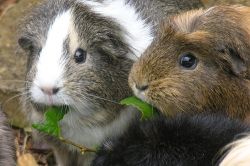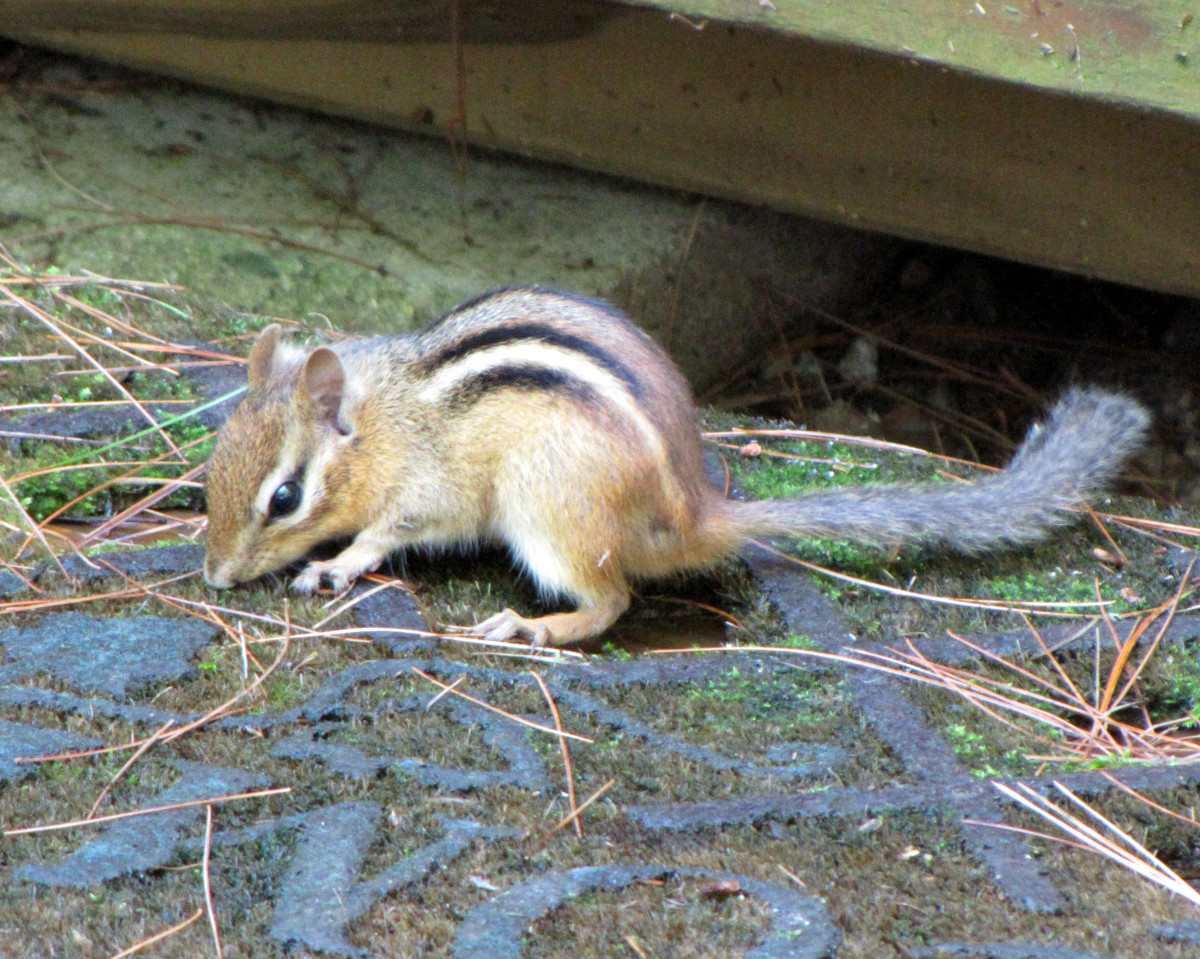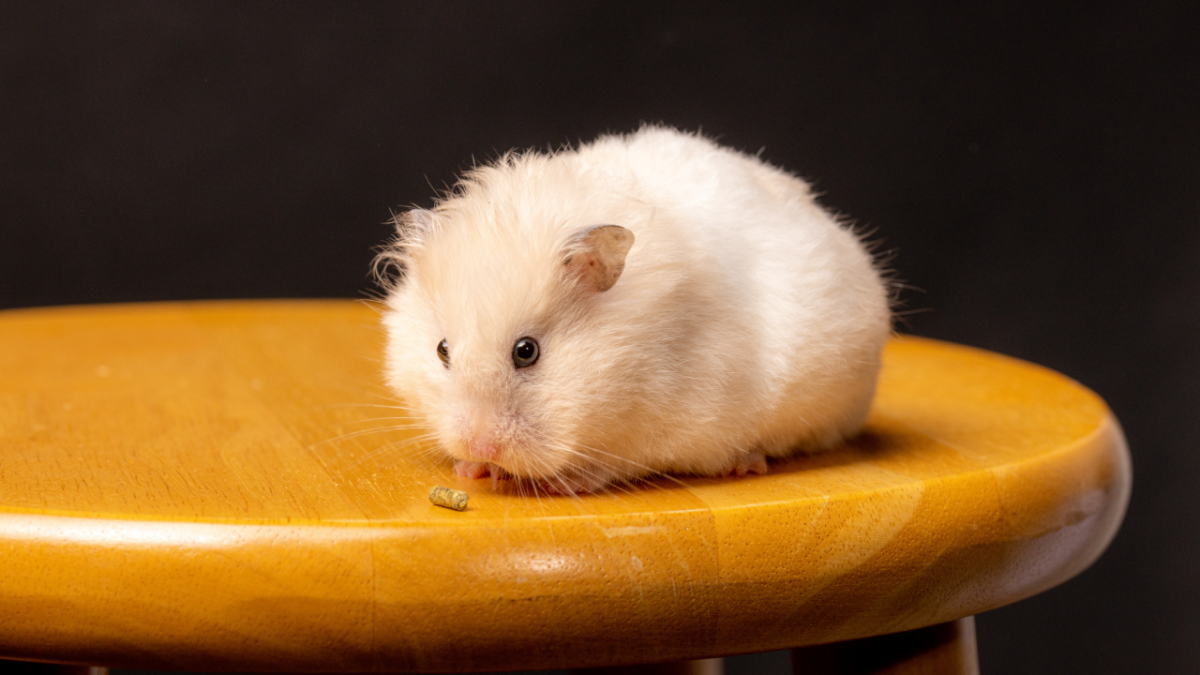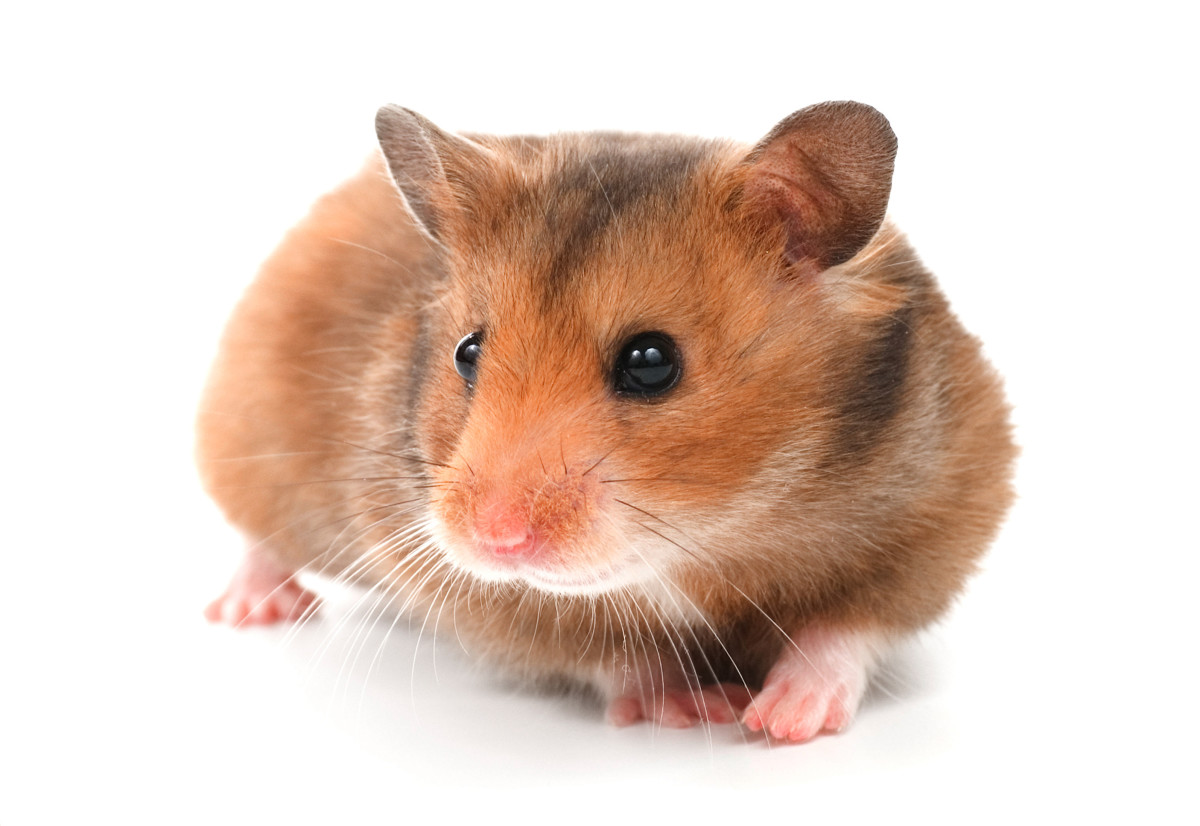Adopting More Than One Guinea Pig

Guinea Pigs Are Happier In Groups
If you currently have one guinea pig and are considering bringing another guinea pig (or two, or more!) home, this page will help you with the new introduction process and deciding whether you can properly handle more than one guinea pig.
If you don't currently have any guinea pigs but are considering adopting more than one together, this page is also for you!
In this lens, you will learn about your options when adopting a guinea pig in terms of deciding whether to adopt more than one. Hopefully after you've read this and the rest of the how-to guides and visited The Guinea Pig Guide website to sign up for the newsletter, you'll feel fully prepared to take on the world of guinea pig snuggles. If you like this page, please give it a thumbs up and share it with your friends.
If nothing else, you can always see some cute guinea pig artwork to inspire you to bring guinea pigs into your life! : )
Starting with an Only Child...er...Guinea Pig!
when it's best to just have one little buddy.
By nature, guinea pigs are herd animals, traveling in packs in their wild habitat in the mountains of South America. It only makes sense that they would be happy with some companions when adopted into a domestic environment.
However, sometimes having an only piggie can be for the best. Generally, it's great to have more than one guinea pig if you can accommodate them, but it's always better to have one well-fed, well taken care of guinea pig than two neglected piggies.
Some reasons you may wish to adopt only one guinea pig are:
- Limited space. While it can often take hardly any more room to house two guinea pigs as opposed to one if you keep them in the same homemade cage (CavyCages.com has some great instructions!), you may find that your guinea pigs don't get along and you need to house them separately.
- Some guinea pigs do seem to like being the only child in the household. Guinea pigs can get very attached to their human parents, so they enjoy having all the attention to themselves. As long as you can devote the attention needed in order to help supplement some of the company that they would have with another guinea pig, your piggie should be happy and healthy.

Adopting More than One Guinea Pig at a Time
cagemates are your best bet for happy cohabitants
Generally, two females will get along fine even if they haven't lived together first, though every guinea pig is different and this isn't always true. Two males can be very difficult to house together if they aren't littermates or haven't been cage mates since they were babies. Here's why:
Male guinea pigs are territorial. If two male guinea pigs grew up since babyhood together, they are likely used to each other's smell and have been accustomed to sharing the space together. If you suddenly bring a new guinea pig into another male guinea pig's realm, he will likely get very upset, feel threatened, and defend himself by fighting.
This isn't to say that two non-bonded male guinea pigs can't successfully be housed together, but it is sort of a hit or miss process. For some examples on how to try introducing two males, read the "Them's fightin' words" section below!
If you know you are in the market for multiple guinea pigs and you find a pair or a trio that you love, both you and your guinea pigs will be rewarded with lots of love.
Photo from Flickr user Cyberslayer
Official Guinea Pig Care Guides
Want more information than you've found on this page?
Be sure to check out The Guinea Pig Guide - a Cutely Comprehensive cavy care website created by me! It's still in progress but if you sign up for the list you'll get a free guinea pig printout and you'll receive exclusive updates about the guide's release and website launch. (and definitely no spam. That's not how I roll!) If this sounds helpful to you, I'd love to have you on the mailing list! Please click here to sign up (it's free, not a membership site or anything. Just email updates.)
In addition to the Guinea Pig Guide site, these books are sure to help you learn all about guinea pigs, and they have all sorts of cute pictures to look at while you're learning. Why can't textbooks in school be that fun??
When Guinea Pigs Fight and What to Do If Your Guinea Pigs are Fighting
how to break up a fight, attempt to reconcile, and when you should separate them for good
As mentioned in the previous section, male guinea pigs are very territorial. This doesn't mean if you stick your hand in their cage they will attack! But if you stick another male guinea pig in there, be prepared for some interesting events to take place...and by interesting, I mean hostile and kind of gross.
So! Let's say that you have one male guinea pig, and you've decided it's time to find him a friend. He's not neutered, and you want to avoid that if you can, so you decide to get him a brother so he can still have the company without making a bunch of guinea pig babies in the process. Sounds reasonable enough. But this is sort of like playing black jack - you can use some different strategies and hope for the best, but in the end, it's still a gamble. I know first-hand since this is the process I went through when adopting Max after I had Gus for a few months.
If you introduce your piggies and they fight, don't give up just yet! The following are some tactics you can try before making the ultimate decision to keep them in separate cages.
Some Fun Guinea Pig Supplies
Give your guinea pigs fun things to chew on, run on, and hide in!
Introducing Guinea Pigs to One Another
Neutral territory is really important
ALWAYS introduce two unfamiliar guinea pigs on neutral territory. This is incredibly important, particularly for males, because it will be a place where it doesn't already smell like one of them. If it's a neutral place, they won't be feeling as territorial about it and haven't 'claimed it' as theirs before the other piggie gets a chance to sniff around. This neutral place could be a brand new cage, your yard (Make sure you have contained them in one place. Do not let them out in the yard on their own!) or some supervised room on the floor. It's good to have them on a towel, and keep another towel handy in case you need to break up a fight.
Get a friend or family member to help you with this. You are going to need to have yourself holding one guinea pig on one side, and a friend holding the other on the opposite side, and you can sit on the floor and put your feet together to make a contained area if you so desire. Constant supervision in this process is imperative.
Normal Guinea Pig Introduction Behavior
What to expect to see when your pigs come nose to nose for the first time.
Gently place your guinea pigs on the neutral territory and allow them to sniff their way to each other. Have your other towel in your hand in case something happens. They will eventually find each other and perform a series of instinctual guinea pig rituals to size up their competition. Don't be alarmed! Unless there is loud squeaking, fur flying, aggressive biting or they're tangled up and look like they're causing each other some serious pain, they are not fighting!
As a test of dominance and establishing a bit of a pecking order, male guinea pigs will follow several peculiar behaviors:
head raising. They will raise their heads up and compete to see who can point their nose up the highest. This is their way of saying "I'm the best and the biggest and strongest. Look what I can do!"
rumblestrutting. This is a term that's been coined to describe the little "dance" guinea pigs do when faced with another guinea pig. They will make a funny little rumbling noise, ruffle up their fur, and waddle their hind feet back and forth kind of like a sumo wrestler! It's very funny to watch when they wiggle their bum back and forth. This doesn't necessarily mean they're going to fight, but it does often mean they're going to do this next activity.
mounting. Do not be alarmed when your two male guinea pigs attempt to mate with each other. This is another form of establishing who's in charge, and they will likely do this several times over the course of their first meeting. This part gets a bit smelly because they emit a very strong scent to mark their territory which has now become each other, so be prepared for that! As smelly as it can be, do not try to stop them or separate them when they do this, because this is a natural process the guinea pigs go through and they are not hurting each other. It's important for them to go through these rituals to really size each other up and figure out what's going on.
teeth chattering. This is a more hostile sign. Guinea pigs will chatter their teeth at each other when they feel threatened or angry. This doesn't always mean that they will lunge at one another and begin fighting, but it's good to keep an eye on them and be ready to break up any altercations if you hear this going on. This is not to be confused with calm tooth clicking/grinding that guinea pigs sometimes do to file their teeth when they're just relaxing.
These things will go on for awhile. It's best to keep your new guinea pigs separated for awhile before putting them together in a cage. Even if they seem to get along after their first encounter, you are going to want to repeat this process several times for a few minutes longer each session until you feel that they have consistently been comfortable and calm around each other.
How to Stop a Guinea Pig Fight
How to safely intervene when the fur is flying.
If your guinea pigs are clearly hostile toward each other and you're sure they're not performing the rituals mentioned above, you are going to need to act quickly and separate them before either one gets seriously hurt. Guinea pigs' teeth are incredibly sharp, so even one bite can do some very serious damage.
To prevent you from getting accidentally bitten in the process, don't shove your bare hand in between two quarreling guinea pigs. They may be so entangled and upset that they don't realize it's you and just bite without thinking. This is why you have another towel on hand. It's good to have a couple oven mitts as well to protect your hands.
Throw the towel over the fighting guinea pigs so that they can't see each other, and, using your protected hands, separate them from over the towel and gently pull them out from underneath when they're not latched onto each other anymore. It's best to not wear clothes that you are too concerned about in case you get a bit smelly or covered in fur. Hug your guinea pig closely and pet him and talk to him quietly to help him calm down. It's best to put them back in their respective cages and try again another day when they've had a chance to calm themselves.
Bathing Guinea Pigs to Help Them Bond
Bonding through the tougher times.
It may sound a little strange, but one of the ways you can try to bring your pigs together if they don't get along is to bathe them together. Not only will this help to dilute their scents and create a neutral territory for them both to contribute to, but the fear of the experience can actually help them to bond. It sounds cruel, but a bath will not hurt your piggies and they won't carry a grudge about the experience forever! After they're all dry and smelling like raspberries, they'll go back to their normal eating/sleeping routine and love you just as much as before.
The whole 'fear' aspect is like they've gone through a tough time together, and even if they didn't like each other going in, the fact that they both had to go through it together can help them to not feel quite so bad about each other afterward.
This doesn't always work, but it is definitely a tactic that can work. Just be sure you don't do it too often since guinea pigs' skin is sensitive and can get dry and flaky easily.
When bathing your piggies, run some warm (but not hot) water to an inch or two in your bathtub. Just enough to come up to their tummies or so. Purchase some gentle, small animal shampoo with as mild a scent as possible, and be prepared to get wet! Once you have the water ready, gently place your piggies in and pet them and talk to them throughout so they don't feel abandoned. They may kick a bit and they'll let you know that they're not having it! Just gently swirl some water onto them with your hand and work the shampoo in. Be sure that you rinse it thoroughly and don't use any shampoo near their eyes or face/ears. Just their body and particularly their rump area should be fine.
If they look cold, draw a bit more warm water into the tub, and when they're fully rinsed, take them out and wrap them in a warm towel, gently patting their fur and fluffing them until they're dry. This can take awhile, and you could try a hair dryer on the lowest, coolest setting far away from their ears and face, but the noise is likely to not go over too well. But you love your piggies so a bit of extra snuggle time shouldn't be a problem!
You can then see how they react on a neutral surface and see if things are any better between them.
More Lenses on Guinea Pig Care 101
I hope that you've found this guide useful so far! Please feel free to read my other lenses about guinea pig care, or, if you don't feel like reading through every single one, you can find an abridged version touching on some more important parts of each section in the summary lens.
Thank you again for reading and be sure to spread the word about proper guinea pig care by telling people you know about this lens who may be interested in adopting a guinea pig.
- Are you Ready to Adopt a Guinea Pig?
Are you ready to adopt a guinea pig? This preliminary lens will help you figure out the first basics you need to know. - Preparing Your Home for a guinea pig
In this lens, you will learn the steps you should take in preparing your home for the arrival of your new guinea pig(s). - What Guinea Pigs Can and Cannot Eat
This lens is all about the dietary dos and don'ts of guinea pig care! If you're thinking of adopting a guinea pig and want to know what to stock up on to prepare, or if you already have a piggie or two and are wondering if you should feed them someth - Where to Find your new Guinea Pig
This lens is all about the adoption process for bringing a new guinea pig into your home, and where you should look to find your furry friend. - Finding a Good Guinea Pig Vet
Hello and welcome! This lens is about finding a veterinarian that will best suit your needs as a guinea pig parent.
Guinea Pig Supplies on eBay
Want to try the bath technique? Check out some small animal supplies on eBay!
I hope you've found this guide helpful! Please leave any comments or questions you have here, whether you have some suggestions for the page, or maybe you just want to say hello. Thanks!









